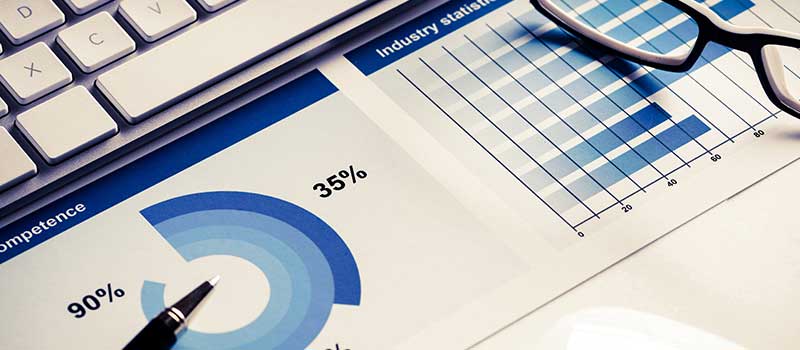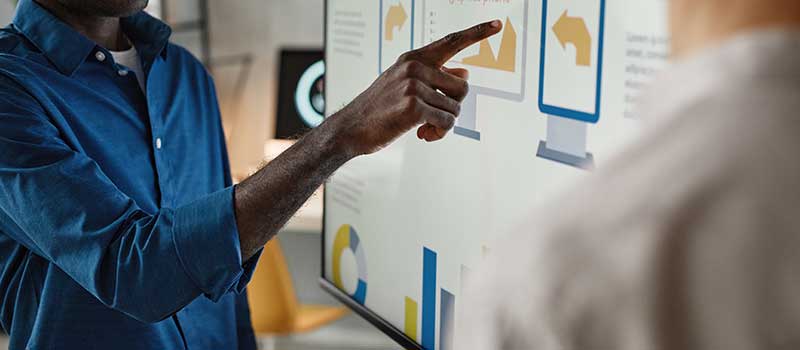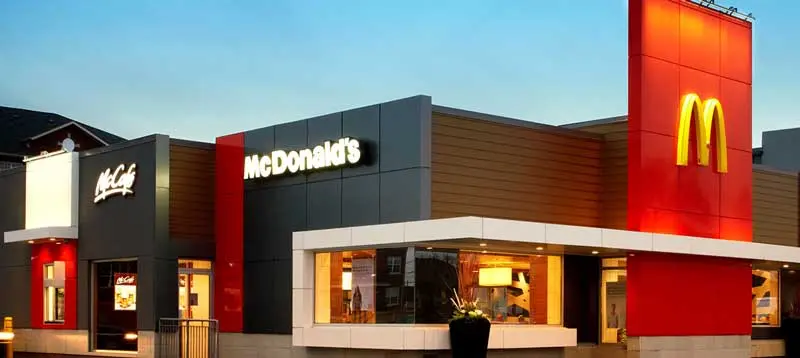How memorable a brand is plays a hugely influential role in the buying decision.
After all, if your audience can’t remember your brand, how can they know why to choose it over the rest.
While brand recognition is the ability of the consumer to recognize a brand from various sensory cues, brand recall is all the more powerful.
Brand recall occurs when consumers remember a brand name when prompted with a category or with no prompting at all making it a sought-after spot in the audience’s mind!
This article will explain the power of brand recall and examine some techniques that brand strategists can implement.
What Is Brand Recall?

Brand recall is the ability of consumers to remember a brand name unaided by sensory cues (which is why it’s also known as unaided recall or spontaneous recall).
When a brand boasts strong recall, brand equity and market share usually follow due to the brand’s ability to stay top-of-mind with the consumer.
If we were to ask a consumer to name a burger-based fast food chain, what are the likely answers that they would come up with?
You’d probably see McDonald’s or Burger King feature heavily across the board, regardless of audience.
That’s because these brand names have built their reputation over time to remain top of mind.
In this sense, see brand recall as a component of brand memorability.

It’s the likelihood that respondents will instantly recollect a specific brand when given a category prompt.
You can experiment for yourself!
Which brands do you think of when given the following product categories?
Car Manufacturer?
Soft Drink?
Athletic Clothing?
I’m betting there’s a high chance you may have thought of the following: Toyota, Ford, Coca-Cola, Pepsi, Nike, Adidas.
This level of strong brand recall doesn’t happen overnight and takes years of marketing efforts.
Let’s explore the importance of brand recall a bit further.
Advantages Of Brand Recall

It’s not rocket science that living rent-free in the customer’s mind is a good position for a brand to be in.
Holding pride-of-place inevitably gives you a competitive advantage over other brands down the pecking order.
Here’s a more comprehensive view of how brand recall helps a business:
PRO Brand Strategy BluePrint
Build Brands Like A Pro Brand Strategist

Boost Sales

There’s clear evidence linking positive brand recall and sales.
The more the target audience thinks of the brand, the higher the chance they’ll make a purchase.
If a brand maintains it’s brand presence or salience in consumers’ minds over time, that audience will likely make repeat purchases.
Repeated successfully over an extended period, and there’s a significant likelihood that the brand will increase it’s market share!
Since all roads lead to sales, marketing campaigns and brand building should always aim to develop brand recall over time.
Competitive Edge

If the consumer has familiarity and comfort with the name of the brand or brand logo, and that is a brand they think of in a given category, this constitutes a competitive edge.
Let’s use Google Search results as an example.
There’s a reason why there’s a whole SEO industry helping companies to obtain the coveted no.1 spot on search results pages.
If the first thing that comes to our heads does the trick, we’ll often stick with it.
This is how consumers first, adopt brands, then develop brand loyalty.
So, gaining the no.1 spot in the consumer’s recall results will reap rewards for a business.
Word-Of-Mouth Marketing

It logically follows that if the brand has high brand recall levels, there’s a high chance that consumers will spread their thoughts on the brand in conversations with other people as they go about their daily lives.
This holds potential for any marketing strategy consisting of word-of-mouth marketing or referrals.
When effective, these strategies essentially make the brand name a regular fixture of popular culture.
Explore Brand Strategy
Programs & Tools
How To Measure Brand Recall?

Few brands have reached the lofty recall heights of Apple or Amazon.
Yet, we all know that Marketing is about tracking metrics. So, what do brand strategists measure to get a feel for brand recall?
Well, there’s a simple formula to use:
Brand recall (%) = (Survey Respondents who correctly identified or recalled your brand/ Total number of respondents) X 100.
This attributes a numerical percentage to brand recall levels, but this should not be used in isolation, rather alongside other metrics to gauge the success of branding strategies.
Brands also need to ensure they’re measuring within focused categories against similar brands.
There’s little point in comparing brand recall for a small athletic shoe startup to that of Nike, for example.
In reality, brand recall is an endgame target for brand management.
Companies should progress through brand awareness and recognition before hoping to attain brand recall.
Aided Brand Recall vs Unaided Brand Recall

It’s worth noting a slight difference between aided and unaided brand recall.
As the name suggests, aided brand recall gives the respondent slightly more help with a stimulating cue.
This is still a valuable market research technique to assess the efficacy of previous marketing campaigns.
For example, you could share images or a tagline from a previous ad campaign to test whether this aids the consumer’s ability to recall a brand.
Unaided recall is where a consumer names the brand without any sensory cue.
For example, if a market researcher asks, “Name a supermarket chain”, and the respondent answers “Aldi”, this is unaided brand recall since there were no brand-specific indicators or assets to suggest the aid the recall of ‘Aldi.’
8 Strategies To Enhance Brand Recall

Let’s dive into to some strategies brands can utilize to boost brand awareness that can eventually lead to brand recall.
#1. Know Your Audience

It’s a common mistake to try and gain traction with as wide an audience as possible.
The logic is that the wider net they cast, the more likely something will stick and more people will recognize the brand.
However, by trying to attract a wide audience, there is a risk of spreading too thin.
There is a better chance of success when brands know their narrow target segment and hone their branding strategies to appeal to them.
Therefore, you must know your audience.
To put it another way, it’s better to obtain brand recall among those most likely to purchase products than to earn recall amongst a broader portion of the non-buying public.
Craft a content strategy that appeals to your buyer personas wherever they are present.
#2. Track Performance Against Goals

All branding and marketing efforts should be goal-based.
Set goals and track metrics at regular intervals to assess brand awareness levels.
We’ve already highlighted the brand recall formula.
Use this in conjunction with other social media engagement metrics such as likes, comments, views and shares.
Use these to build a picture of your brand recall while remaining unbiased to the data.
After all, there is a risk that these can become vanity metrics.
#3. Highlight Differences

It’s not enough to be known.
In a saturated, competitive marketplace, brands need to be known for their positive differentiators.
What makes the brand special?
What unique proposition does it provide to customers?
Whether it’s an element of brand values or a unique new product, make sure branding highlights the brand elements that mark it out as unique amongst it’s competitors.
Again, logically, we know that standout brands have more chance of spontaneous recall, so brand strategists must do their utmost to make their brand sticky.
#4. Use Content Marketing

Associate the company name and brand experience with solutions.
In modern marketplaces, companies that use content marketing to answer consumer questions build brand loyalty as helpful solution providers.
Use a long-term content marketing strategy to turn yourself into a trustworthy, go-to source of knowledge for your industry.
A great brand understands that their customers have more than one problem and are often in a position to help them with others through quality content.
#5. Embrace Partnerships

Embrace partnerships to piggyback on an existing audience.
To do this well, you’ll need to partner with brands that aren’t direct competitors but offer a product or service that complements your offering to a similar audience.
For example, a clothing company may partner with a shoe company to work on a collaboration.
Alternatively, partnerships need not be exclusively with corporate brands.
Influencer marketing and personal brands are on the rise, allowing brands to tap into an influencer’s following if a product or service matches their audience and content.
The right partnerships can undoubtedly provide a boost to brand recognition and boost brand recall chances.
#6. Embrace Digital Marketing

Consumers have never been as accessible to brands as they are today.
With the advent of digital marketing, brand managers have a range of tools with which to boost brand recall.
Invest in a social media strategy to reach your audience.
Invest in an SEO strategy to get content in front of your audience.
Invest in paid ads to get the brand in front of the target audience.
Invest in LinkedIn to build a reputation as an industry leader.
Invest in email marketing campaigns to foster relationships with consumers.
Wherever you choose to invest your time and branding efforts, there is huge potential to boost brand recall through digital marketing.
#7. Develop Catchy Brand Assets

Easier said than done, we know!
But, often, there’s a lot to be said for an iconic logo, tagline, jingle or color scheme combination, among other potential brand assets.
The key to utilizing brand assets toward brand recall is to use them consistently in a way that reflects the brand image in the audience’s mind.
#8. Conduct Brand Maintenance

Part of the trick of influencing brand recall involves diagnosing and eliminating any risks to minimize brand damage.
Be vigilant and protect your brand against anything that may harm its hard-earned reputation.
While positive brand recall gives a brand a competitive edge, negative brand recall, when spontaneous recollections of a brand are negative in nature, can be a death sentence for the brand.
Brand Recall Examples

Some brands absolutely boss it when it comes to brand recall.
Trust me when we say that it’s not simply down to good products or services but in fact the work of a branding team building brand awareness and memorability over years and years.
Let’s take a look.
McDonald’s

Ask anyone around the world to name a fast-food chain and McDonald’s is highly likely to feature.
Make it easier with some aided brand recall.
Which fast food chain is associated with:
“I’m lovin’ it”
A golden arches ‘M’ logo
A mascot named Ronald
It’s a simple exercise that helps make it clear just how McDonald’s branding is well-established worldwide thanks to strict brand guidelines.
The giant ‘M’ logo is visible and unchanged in town centers the world over.
It immediately brings to mind the McDonald’s their unique burgers, fries and unique experience with convenient, cheap, tasty food.
Apple

Apple’s logo is such a valuable asset, that it has little need for the brand name while present.
Immediately recognizable, it’s repeated across all products and Apple stores worldwide.
As such, the logo effectively stands as a beacon representing all that Apple stands for; innovation, experience, simplicity and top-end products.
The brand image and reputation is embedded over time in the minds of loyal customers through consistent and well-thought-out brand experience.
The result is brand recall like no other, where most consumers can bring to mind all the features of Apple as a company just from a glance at its logo.
Over To You
Brand recall is when a consumer thinks of a brand within a given category.
It’s a step above brand awareness and recognition.
Having positive brand recall among your target audience results in a competitive advantage over competitors.
There is a simple formula to calculate brand recall, but this should be supplemented with other performance metrics for a clearer picture of brand performance.
Brand recall is the product of wide-ranging long-term strategies that include knowing your audience, highlighting differences, embracing new marketing channels, and minimizing brand damage.
McDonald’s and Apple are two brands with excellent brand recall worldwide.
On-Demand Digital Program
Brand Master Secrets
Make the transition from hired-gun to highly valued brand strategist in less than 30 days. The systems, frameworks and tools inside this comprehensive program are all you need to level up.








